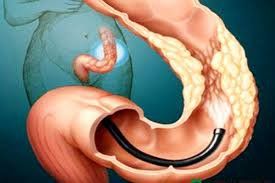This is an automatically translated article.
This article is professionally consulted by resident Doctor Le Thanh Tuan - Department of General Surgery - Vinmec Nha Trang International Hospital. The doctor has extensive experience in examination, treatment and surgery of abdominal diseases.1. In what cases is small bowel resection performed?
Small bowel resection is a surgical procedure indicated in cases of abnormal or diseased bowel segments. Specifically:The small intestine is necrotic due to causes such as volvulus, mechanical intestinal obstruction, acute intussusception to late, intestinal strangulation due to hernia,... The small bowel resection in this case is mandatory. Forced, if the necrotic small intestine is not treated, it will gradually rot, causing abdominal infection, threatening the patient's life. The assessment of necrotic bowel segment can be based on factors such as: abnormal intestinal color change, turning black or bruised, intestinal wall thickening, loss of smoothness, blood vessels on the intestinal surface. No longer beating heart rhythm,... Patient has diseases: GIST (gastrointestinal stromal tumor), ileal carcinoid tumor, Crohn's disease, intestinal tuberculosis, diffuse polyposis of small intestine,... Breakage lesions Mesenteric vasculature causes ischemia to nourish a segment of the small intestine. Large perforation-tearing lesions on the bowel loops, lesions on the mesenteric margin, or multiple focal lesions.

Patients are less painful, laparoscopic surgery is less invasive, so the recovery time is fast, and the hospital stay is reduced. The aesthetic factor ensures, the scar is small and heals faster. However, not all cases are suitable for laparoscopic surgery. Laparoscopic small-bowel resection is contraindicated in patients with weakened health, respiratory failure that does not allow for intra-abdominal inflation, a history of repeated abdominal operations or patients with metastatic cancer.
Recommended video:
Periodic health check at Vinmec: Protect yourself before it's too late!
2. How is laparoscopic small bowel resection performed?
Laparoscopic small bowel resection is performed according to the following steps:The patient is under endotracheal anesthesia, lying on the operating bed in the supine position, legs apart, the surgical assistant technician conducts the operation. bladder catheterization. The patient lies with the head low, depending on the location of the injury, tilted right or left. The main surgeon stands between the patient's legs, two assistants stand on either side, the instrument technician stands on the left side of the patient. The surgical process uses 3-4 trocars, 1 trocar is placed below the umbilicus, 1 trocar is placed in the right iliac fossa, 1 trocar is placed in the left iliac fossa, an additional trocar can be placed above the pubic bone if necessary. The doctor, after examining the lesion site of the small intestine, will proceed to release the small bowel mesentery corresponding to the small intestine to be removed. Instruments that can be used to cut blood vessels are clips. Ultrasound knife, vascular stapler, ... Using a tool to bring the intestine to be cut outside the abdomen, cut the small intestine as done with open surgery.

End-to-end intestinal anastomosis technique - end: applied when two sections have the same aperture or insignificant staggered. The mesentery of the intestine is thin and soft, ensuring good nourishment for the anastomosis. The two edges of the intestinal section are no longer pathologically damaged. If the two sections are staggered, one section at the smaller end of the gut must be beveled. One layer or two layers can be stitched end-to-end. The advantage of this suture method is that it helps to return the anatomical shape, the intestinal peristaltic wave is continuously passed through the anastomosis without changing direction, suitable for physiology. Side-to-side enteric anastomosis: performed when the two-sided apertures staggered significantly. It is not certain that the pathological damage of the two intestinal sections or the diameter of the two sections is too small, the mesentery is thick, the intestinal wall is edematous and thick. There are many methods for lateral intestinal anastomosis such as Moynihan method, Mayo method,... End-to-side intestinal anastomosis: is a difficult technique, should only be chosen when other methods of intestinal anastomosis cannot be performed. , this is essentially a combination of two end-to-end join techniques with side-to-side join techniques. Should limit the choice of this method because of disadvantages such as: difficult to do, leaving a diverticulum of one end of the intestine that has been closed, weak in the mesenteric border, loss of anatomical shape of the small intestine,. .. In addition, in some specific cases, the surgical team can perform the extra-abdominal bowel anastomosis technique. In which, the endoscope is only used to monitor the lesion, then, the surgeon will make a small incision about 3-4cm below or above the navel through the white line to pull the intestine to be removed outside the wall. abdomen and perform intestinal anastomosis as classical open surgery.
3. Is it okay to cut the small intestine?
Small bowel anastomosis surgery can cause some complications during and after surgery. During surgery, the most common complication is bleeding due to inadequate mesenteric incision sites. If hemostasis treatment cannot be changed to open surgery, to avoid causing large hematoma in the mesentery. Postoperative complications are intra-abdominal bleeding, anastomosis, narrowing of the anastomosis, etc. These cases need to be re-operated soon for handling.Please dial HOTLINE for more information or register for an appointment HERE. Download MyVinmec app to make appointments faster and to manage your bookings easily.
MORE:
Measures to treat Crohn's bowel obstruction: Causes, symptoms, diagnosis and treatment Successful laparoscopic suture of small intestine for patients with bowel rupture due to traffic accident














